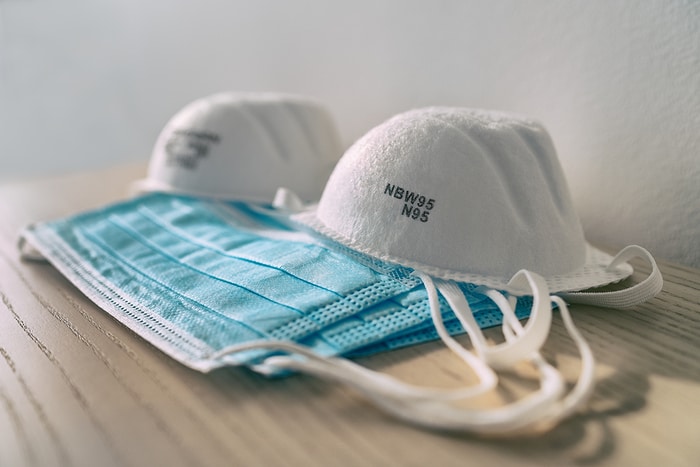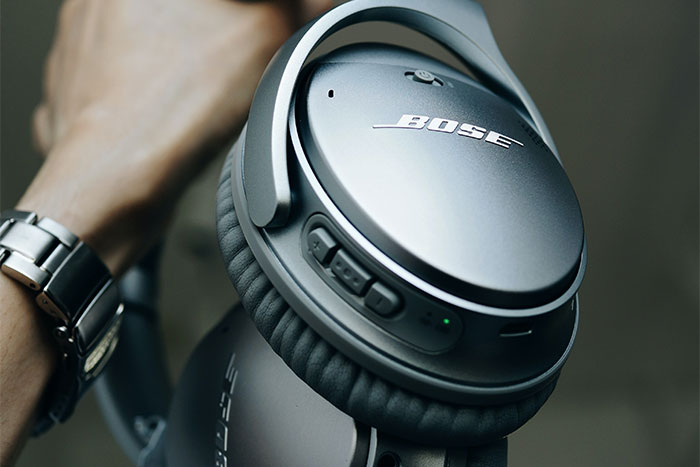
The coronavirus (COVID-19) outbreak is spreading through the world at a staggering pace. With various vaccine trials still under early stages, following proper safety measures remains the most effective way to lower the spread of COVID-19.
These practices include social distancing, hand hygiene, and wearing protective face masks. The first two advisories of maintaining physical distance and washing your hands frequently are quite straightforward. But when it comes to wearing face coverings such as a surgical mask, you might feel a bit out of place at using the equipment for the first time.
Wondering which way round do surgical masks go, what do the layers in these masks do, and how long do you wear such a mask are all frequent yet valid questions. Fortunately, there are simple answers to each of these inquiries.
To help you learn more about surgical masks and practice effective prevention at all times, here is a detailed guide to wearing and using your surgical masks the right way.
Can Wearing Masks Lower the Risk of COVID-19?
The novel coronavirus is typically spread through person-to-person transmission. When an infected person talks, coughs, or sneezes, they can transmit the virus to others in their vicinity through respiratory emissions.
However, isolating an infected person from those still untouched by COVID-19 is easier said than done. It’s because 20-40 percent of COVID-19 cases are asymptomatic, which means they remain infected with the novel coronavirus without showing any symptoms. In addition to this, some cases show mild symptoms of the disease and find it easier to believe that they have the common cold instead. Whereas, others can spread the virus before they start showing any symptoms.
Since asymptomatic, mild, or presymptomatic cases are not extensively tested for COVID-19 or hospitalized for treatment, it’s important that you maintain a distance of at least 6 feet from others in public settings. Washing your hands frequently can also help prevent the transmission of the virus through your mouth and eyes.
Along with this physical distancing and hand hygiene, it’s also critical to wear a protective face covering to decrease the spread of respiratory droplets in case you have an asymptomatic or mild case of COVID-19.
How Does Wearing Surgical Masks Help?
Surgical masks are usually worn by healthcare professionals to protect them against splashes, splatter, and large droplets. You can typically find these masks at hospitals, clinics, and at dentists’ offices. But they can also help you follow necessary safety measures against the novel coronavirus.
According to institutions such as the U.S. Centers for Disease Control (CDC), a surgical mask can lower the transmission of the wearer’s respiratory droplets to others. While health experts recommend the use of cloth masks for general use, surgical masks can also help decrease the spread of COVID-19.
Surgical masks are lightweight and loose-fitting, which makes them easy to wear for anyone. It’s also essential to understand that despite their face-covering properties, face masks do not affect your breathing in a negative way. This quality also applies to surgical masks that give you ample breathing room even with extended use.
While surgical masks are easily accessible and comfortable, they are not reusable after being worn once. With that being said, you can switch to new masks after each use to ensure their efficacy.
Now that you understand the role of surgical masks in lowering the spread of COVID-19, it’s time to know how they are made and how exactly you can wear them.
Surgical Masks Follow a Multi-layer Design
Surgical masks use paper or polypropylene as their base material. But regardless of the core composition, they are quite comfortable to wear. These masks also have ear loops or straps attached to each of their corners, which is how you put them on your face.
Apart from their synthetic material, surgical masks are easily identified by their multi-layer design. These layers give the mask a folded effect and make it stand out from typical cloth masks.
But besides this visual effect, layers play a big part in the overall functionality of these masks. Typically, surgical masks use a three-layer structure within their inner design, with each coating fulfilling a different requirement of absorbency.
The Top Layer
This is the external layer of the surgical mask that is visible when someone else is wearing it. It is made out of an outer-fluid repellent layer, which is meant to protect the wearer against external elements such as splashes and splatter. This layer can often be a shade of blue or green, but that is not always the case.
The Middle Layer
The middle layer of surgical masks typically contains a filter. This layer works against viruses and bacteria. It also provides added protection against any external elements that are not fully absorbed by the top layer. This layer is not usually visible under the external materials.
The Bottom Layer
This layer is made out of an absorbent and usually softer material. It absorbs the respiratory droplets of the wearer and keeps them from spreading out into the air. This inner layer is often white, but it can also sport the same color as the external layer.
Some surgical masks may use additional layers. But their overall composition is based upon this base design.
But despite this layered structure, it’s not always easy to identify which end of surgical masks is supposed to be its external surface. With that being said, it’s not impossible to determine this difference.
Which Way Round Should You Wear Surgical Masks?
The following tips can help you wear your surgical mask the right way.
One of these suggestions points to the mask’s visual design as a point of reference, while the other uses the fabric’s overall feel to help you determine its inner and outer layers.
The Visual Way: Identify the Color
The best way to determine the outer layer of typical surgical masks is to check their color. By design, the colored side of a two-shade mask always identifies the external layer.
For instance, if your mask is blue or green at one end and has a white layer on the other side, the colored side will need to face outward when you wear it.
The Practical Way: Feel the Layers
Many surgical masks are made using a single color on both sides. This can make it difficult to tell the difference by a simple look.
Here, you can check the feel of the mask to determine its inner layer. By default, the softer layer will always go against your mouth and nose. The rougher layer will face outward. But before you check these layers, make sure that your hands are properly sanitized. This ensures that you are not infecting the mask by mistake.
It is also important to note that you should not take the attachment points of the ear loops to identify the inner and outer layers of your mask. Many masks attach the ear loops to the inner layer, while others go a completely different route and attach them to the outer side instead. This is why, you should only use the visual or sensory way to determine the inward and outward sides of your mask.
Use Best Practices for Wearing Surgical Masks Properly
Wearing your surgical mask on the correct side is the right way to go. But it only improves its efficacy slightly. In order to ensure that you are wearing your mask properly, follow these best practices at all times.
- Cover your mouth, nose and chin. Not covering your face properly can cause your respiratory emissions to escape into the ear. An optimal practice is to check that the loops are fixed on your ears properly and the mask provides as snug a fit as possible.
- Don’t touch your mask until you get it off. Adjusting your mask frequently or lowering it to your chin can infect it in public settings. Make sure to only touch it when you are ready to discard it.
- Dispose your mask properly. This is critical to ensure that you don’t inadvertently spread COVID-19 to others. Instead of throwing your mask on the road, always discard it into the trash.
- Replace after each use. Since surgical masks are not reusable, make sure to use a new one after each use. You can also turn to cloth masks for a more sustainable alternative.
By following these practices along with physical distancing and hand hygiene, you can do your part in lowering the spread of COVID-19.
If you experience common COVID-19 symptoms such as fever, cough, or shortness of breath, don’t hesitate to contact a health professional. This ensures that you can get tested and self-isolate even when your symptoms are mild.


